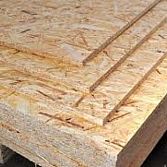Types Of Timber, Its Uses And Its Preservation Techniques
Timber is one of the widely used products in the field of construction, but it has many other uses besides that too. The other name used for timber is lumber. There are basically two stages of timber- one is the surfaced one, and the other one is the roughly sawn one. The rough timber is used for making furniture or in any other process that requires further cutting or shaping. When it comes to the finished form, they are readily available in the market in different standard sizes for different uses in the construction.
People often confuse between the two terms 'wood' and 'timber.' Wood is referred to as the material that the bark of the tree is made of. Wood is considered to be the hard, fibrous tissue that is not only found in the bark and trunks but also in the roots and stems of the tree. The term timber is used the moment the bark is cut from the tree and is at its processing stage.
We can have a quick look at the types of timber available in the market.
Plastic timber: It is what exactly states are. It is a combination of plastic and timber. The reason why it is used widely is because of the fact of how strong and durable it is; besides it is fire resistant. The basic advantage of using this over other wood products is that it burns much slower than most of the treated timber.
Plywood sheets: Plywood is the sheets of timber. It is made by putting together the thin sheets of timber to make a thicker and stronger plywood sheets. The advantages of using it are that it is economical, easy to produce, and doesn't get cracked easily. It is used for flooring, making shutter doors or wooden wall partitions.
Hardwood Plywood sheet: The origin of hardwood is the deciduous trees. Hardwood is known to be so because it takes a lot more time to grow than other trees, and that is the reason for its denser barks. The timber merchants sell furniture or doors made of denser wood to the clients that use wooden flooring, furniture, or doors for daily use. The quality of such timber is known by the number of rings on the bark of that tree. The greater the number of rings on the bark of the tree, the higher the quality of the timber produced from it.
These were the basic and most popular forms of timber, but there are many other types such as modified wood, softwood, pine, tulipwood, Sapele wood, wood ash, sawn timber, etc. Timber is not only used for construction, flooring, and furniture but also for making railway sleepers, electric poles, industrial production of paper, production of musical instruments, and sports goods.
We see that people have started using wood in their day to day life, so it is important that they are well informed about its preservation as well. It is important to preserve it and protect it from the very beginning so that it can be used for years and be protected from insects and fungi. One can use any of the methods and materials to protect the timber. People can use any method or preservative that has a few basic properties:
- It should be cheap and easily available.
- It must not contain anything that is harmful to the health of the people.
- The methods or preservatives used should not affect the strength of the timber.
- It must not be inflammable or corrosive to metals.
- The few preservatives can be paints (containing oils or solignum) coal tar, ASCU powder, etc.
- Few methods that can be used are brushing, painting, spraying, injections, etc.
Reactions
fullassignment
Hello everyone we have an goldan opportunity if you are seeking Assignment Writing Help services. here we offers best UML Assignment Help services . FullAssignment offers the Dissertation Writing Services with unlimited discounts with Best Assignment Help
Posted on: 14-09-2020 11:11
Author
David ClarkeDavid is a professional writer and blogger who writes for varieties of online publications. His interests of writing are home improvement ideas, home decoration, modern furniture, and a lot more.



